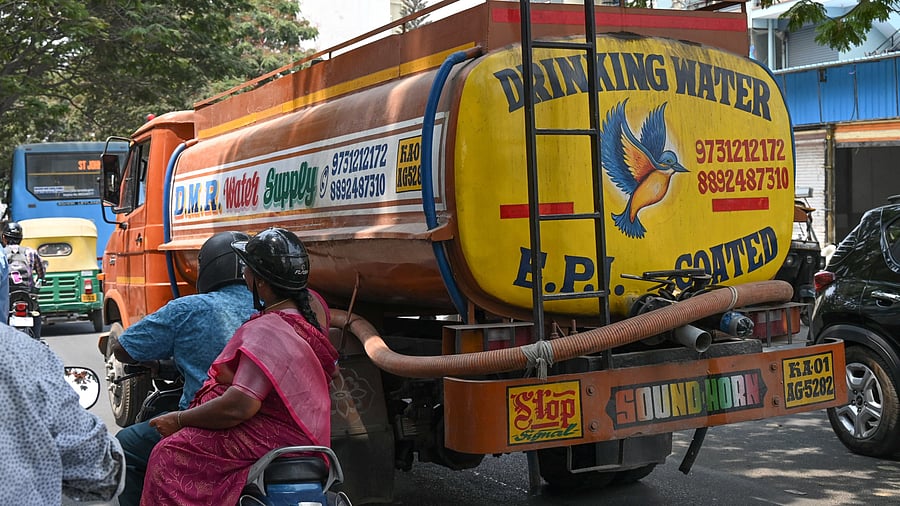
Pic for representation.
Credit: DH Photo/S K Dinesh
A water crisis is looming again as summer approaches. Earlier this week, the Bangalore Water Supply and Sewerage Board (BWSSB) announced that the groundwater levels in 80 wards in the periphery of the city are expected to plunge by 20-25 metres. The decline is expected to begin in February.
The findings were from a study by BWSSB in collaboration with the Indian Institute of Science (IISc).
Though BWSSB chairman Ram Prasath Manohar has advised residents of these areas to switch to Cauvery water, many are yet to get a Cauvery water connection.
Metrolife spoke to resident welfare associations (RWAs) to learn the measures they are taking to avoid a crisis like that of last summer.
Monthly checks of the plumbing in every flat to fix any leaks is one of the measures being followed at Parimala Sunrise apartments in Whitefield. Parinay Jain, secretary of the apartment’s RWA, shares that they also plan to instal water meters in every flat. Only two or three apartment complexes on the road where Jain lives receive Cauvery water. “And even that is erratic,” he states.
Last year, they were totally dependent on tankers. “If there are power cuts where the tankers pump water, they will not be able to deliver. There were days when we had to manage with one tanker,” he recalls.
In Horamavu, where Kochu Shankar lives, they are banking on Cauvery water supply, which they are yet to get. “We have been waiting since October,” Shankar says. They have been surviving on water tankers too. For ‘good quality water’ which is sourced from nearby villages like Rampura and Doddagubbi, they pay Rs 1,000 a tanker (for 6,000 litres of water). For water sourced from lakesides, which is often contaminated, the price is Rs 700 for 6,000 litres. In peak summer, the prices are expected to double. Residents hope the BWSSB will keep a check on the water tanker mafia by enforcing a cap on prices.
Last year, parts of Koramangala 6th block were affected by the water shortage. “This was mainly because the pipe network is old and damaged. We have been following up with the BWSSB to lay new pipes, but that has still not happened,” says Neeraja Shetty, a resident.
The Koramangala 4th block RWA has been more proactive. In summer 2024, they tested the water in three public borewells to ascertain if residents could fall back on them should they face a crisis. The results showed that the water contains minerals like nickel and iron. “We are planning to talk to experts to determine if the water is potable, or if it can be used for gardening or cleaning,” says Raghu Rajagopal, president of the block’s RWA.
Expert speak
Bengaluru requires 18 tmc of water for the entire year. About half of this capacity comes from KRS dam, which is about 125 kilometres away. “Just imagine the energy that is required to pump that water into
Bengaluru,” points out Ganesh Shanbaug, water conservation expert.
Bengaluru receives 20 tmc of rainfall every year, which is more than sufficient to meet its requirements. “This water goes into gutters and drains, causes waterlogging and is lost. This is why rainwater harvesting is important,” he states. Using technology to turn sewage water into white water and getting back to the practice of using aerators are measures residents must prioritise right from the beginning of the summer, he says.